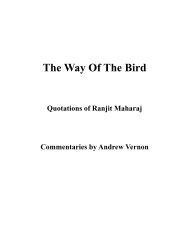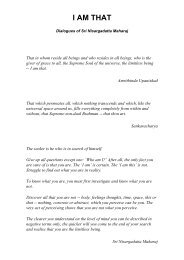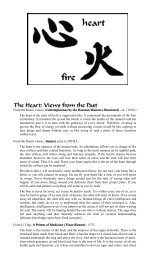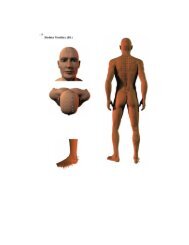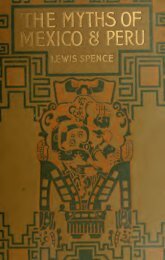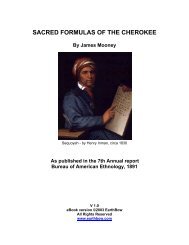Create successful ePaper yourself
Turn your PDF publications into a flip-book with our unique Google optimized e-Paper software.
On magic<br />
are not equal. For light diffuses and penetrates through the lowest and<br />
deepest darkness, but darkness does not touch the purest sphere of light.<br />
Thus, light penetrates and conquers darkness and overflows to infinity,<br />
while darkness does not penetrate or overwhelm or equal the light, but<br />
rather is very weak compared to light.<br />
Parallel to the three types of magic mentioned above, there are three<br />
different worlds to be distinguished: the archetypal, the physical and the<br />
rational. Friendship and strife are located in the archetypal world, fire and<br />
water in the physical world, and light and darkness in the mathematical<br />
world. Light and darkness descend from fire and water, which in turn<br />
descend from peace and strife. Thus, the first world produces the third<br />
world through the second, and the third world is reflected in the first<br />
through the second.<br />
Leaving aside those principles of magic which play on the superstitious<br />
and which, whatever they be, are unworthy of the general public, we will<br />
direct our thoughts only to those things which contribute to wisdom and<br />
which can satisfy better minds. Nevertheless, no type of magic is unworthy<br />
of notice and examination, because every science deals with the good,<br />
as Aristotle says in the introduction to his De anima, 4 and as Thomas and<br />
other more contemplative theologians agree. Nevertheless, all this should<br />
be kept far away from profane and wicked people and from the multitudes.<br />
For nothing is so good that impious and sacrilegious and wicked people<br />
cannot contort its proper benefit into evil.<br />
In general, there are two types of efficient cause: nature and the will. The<br />
will is threefold: human, spiritual and divine. Nature, as used here, is<br />
twofold: intrinsic and extrinsic. Furthermore, intrinsic nature is of two<br />
kinds: matter or the subject, and form with its natural power. Extrinsic<br />
nature is also of two kinds: the first, which is preferably called an image of<br />
nature, is a trace and shadow or light which remains in a thing within its<br />
body, like light and heat in the sun and in other hot bodies; the second<br />
emanates and radiates from a subject, like light, which flows from the sun<br />
and is found in illuminated things, and like heat, which resides with light<br />
in the sun and is also found in heated bodies.<br />
By examining the number of these causes, we can descend to the<br />
differentiation of powers or of effects produced by the first cause through<br />
the intermediate causes down to the closest and lowest ones, by restricting<br />
the universal cause, which, itself, does not attend to any one available<br />
4 Aristotle, De anima, I, 1 (402.a.1–2).<br />
109







